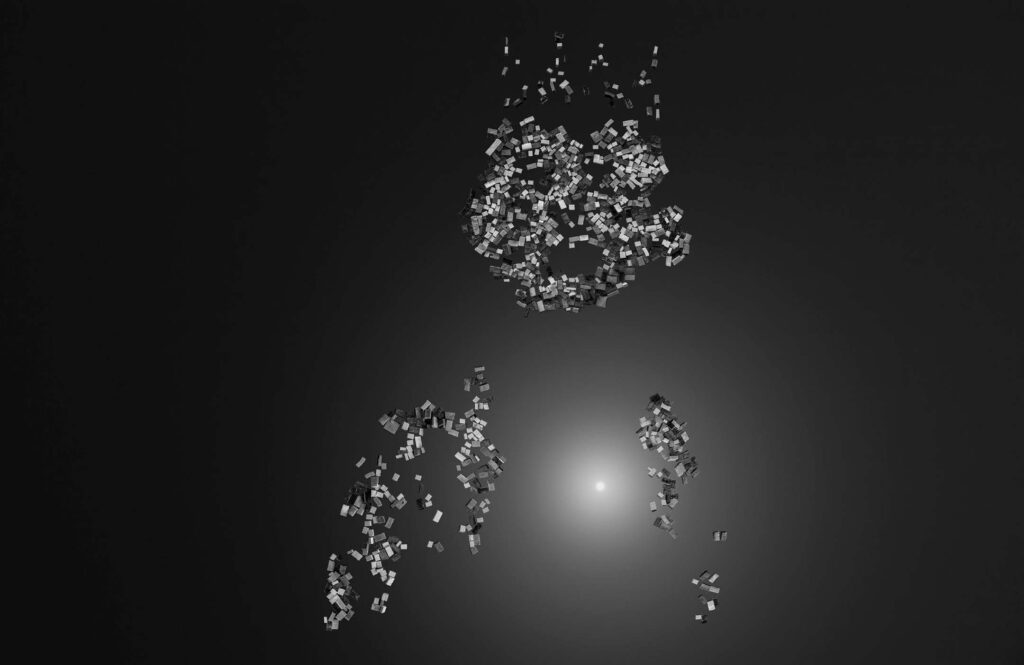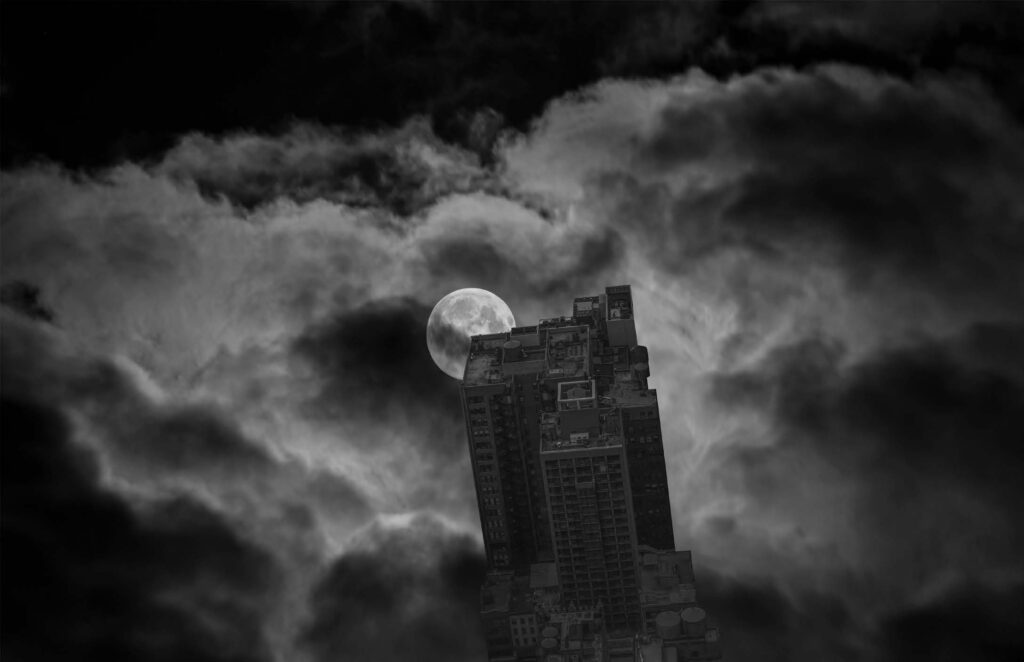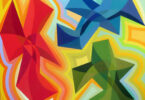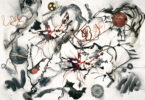
Marco Lando’s powerful pieces were recently seen in his solo show, Fragmentation, at the Viridian Gallery. The walls were graced with digital giclée prints, post-apocalyptic interpretations of life to be lived in a new ominous age, the artist referencing alchemy and Roman mosaics as inspirations.
Among other influences, Hermes Trismegistus and the Symbolists inform these dark works in two projects. Readings of ancient mosaics of Ravenna in the sequence, Specter of Belief, and pain-filled photos of modern urban wastelands in the series entitled Alchemy. Shards are inferred with wholeness in an atmosphere of hope and faint spiritual light, despite the threat of encroaching chaos.
In Specter of Belief, disembodied visages of emperors and pontiffs that appear as Lego-like ejected mosaic scatterings in a bleak universe are Lando’s interpretations of Emperor Honorius’ reign in the western Roman Empire as it faced plundering by tribes outside Hadrian’s walls. The digital images are sinister commentaries on the sublime mosaics of Ravenna, the capital city of the western Roman Empire from 402 to 476. Here, they are portrayed as ghoulish face fragments topped by askew crowns and miters. The depicted eye sockets are now those of hollow rulers. Sol Invictus vanishes and the Empire crumbles as there is no chance for the superior Roman power to return. The artist captures the despair and turmoil of the times in harrowing black and white.
In Alchemy, post-modernist skyscrapers are reduced to cold, empty shells, without romantic ornament. The Lipstick building melted in partly excavated ruins. These lost quasi-post Dresden scenarios of collapsed foundations and lit skyscrapers tottering under dark, full-mooned skies, infer alchemical transformations and juxtapositions where life at the full lunar phase produces monstrous visions, pulled tides, along with seed germinations. Although the world is bereft, the presence of our shining satellite conjures up, for me at least, a white goddess, the Caesars toppled, ghosts of Thoth, the Egyptian god of the moon and reckoning, changing human realities into more profound spiritual understandings.
In the moon’s eternal waxing and waning, hints come that despite catastrophe, existence is still possible, though hidden within heaven and hell’s marriage, while the philosopher’s stone is sought to purify and perfect. Lunar cycles indicate cosmic endurance with the redemption of human fallen states repeatedly creating never-ending insights. Lando’s thespian background allows him dark visions of unfolding dramas on universal stages, with the action dimly lit, and the audience as psychic actors within the plays and without costume cloaks. In the artist’s digital remnants of edifices, form is knocked off the foundation of function and the modern utopia destructs bleakly, presaging economic and soulless conflicts.

The artist references Odilon Redon’s noir charcoals, terrifying dreams in the night, psyche drifting in indistinct spheres of mental need, sorting out the body and soul’s encounters with good and evil to bring clarity to the mind. With the presence of the moon, the viewer knows the destroyed phase of civilization will evolve as new human constructs, despite today being forgotten as linear trajectories. The overarching presence of nature will determine survival on our fragile planet. We know, finally, to respect the eternal energies within which we reside, humanity kneeling to cosmic mathematical order that supersedes us, although today they seem corrupted. Subliminally, we understand angelic guardians protect a divine grid so future iterations will appear as holy to us, far beyond our limited current human comprehensions. G&S





Leave a Comment